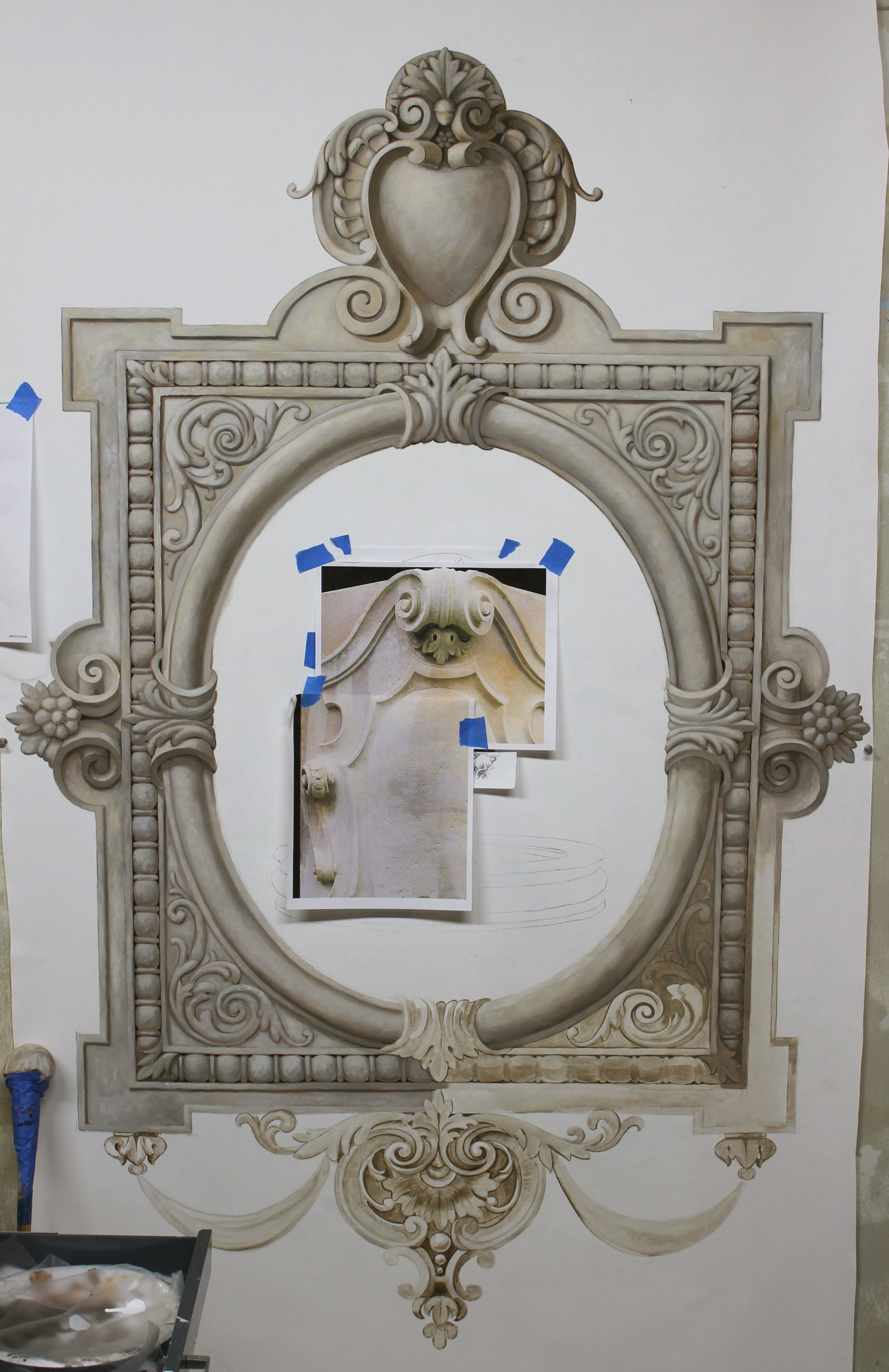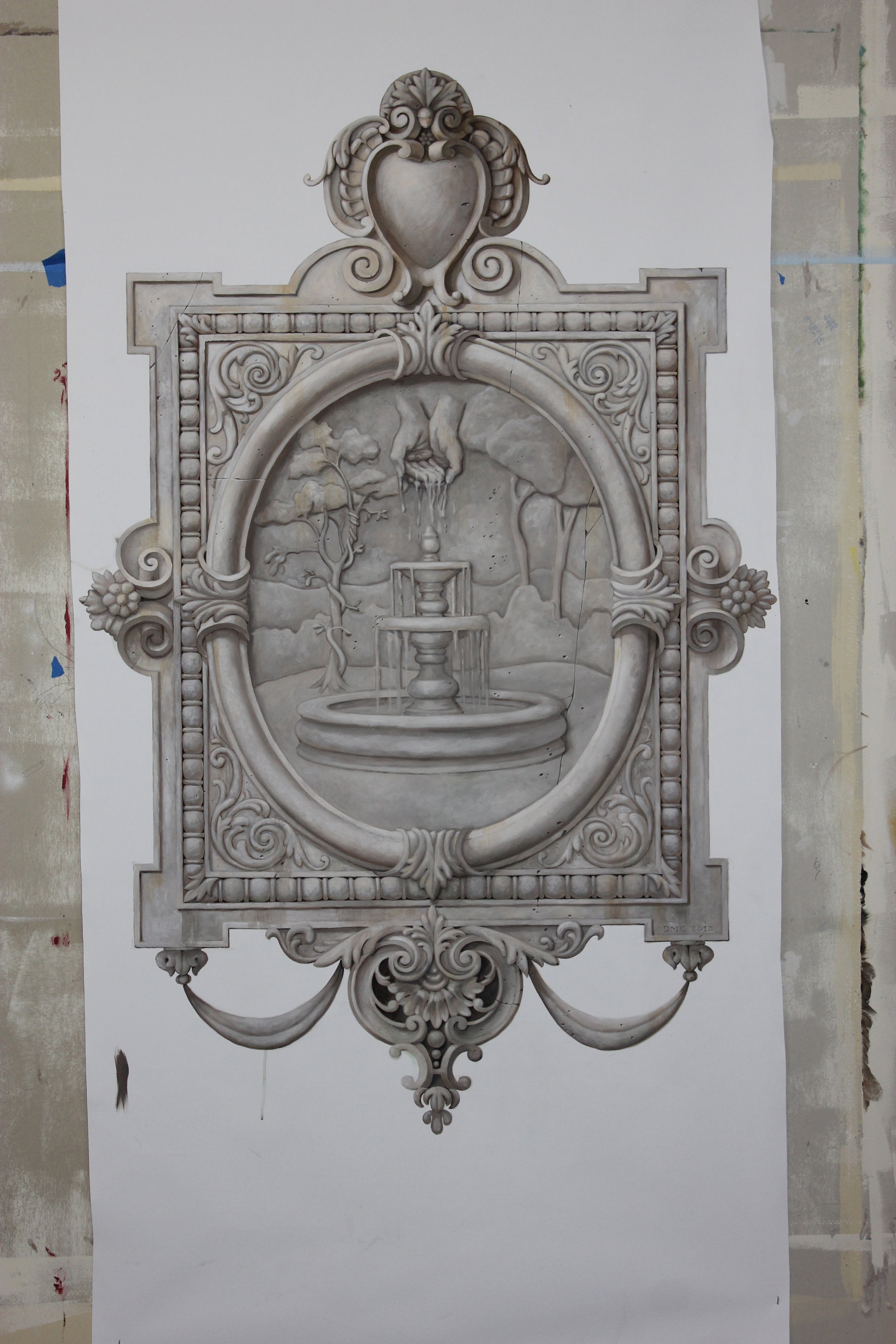A painting starts with a series of sketches. To get to this point there are several hours of research, designing, discussions with the client, revisions, then final approval. Sometimes the sketch is done in color. For this piece, we had images of stone that we selected for age, color and patina.
I usually start with an underpainting of values to help create the depth before adding color. This also helps with getting to the right value without a ton of paint. I don't always do this, but for Trompe L'oeil it helps me see the dimension and establish light and shadow placement.
Next I add the tones of the stone. I premix my main colors and tweak them on the palette as I go. This piece has a lot of warm shadows and cool highlights. You can also see my reference material. I spend countless hours searching for the right references. Without them, I am unable to really replicate the natural qualities of the material.
Once the main areas are blocked in, I like to go back and tweak areas to make sure its cohesive. The center will have a very specific image that will look like a bas relief carving. I shot reference photos, including Mike's hands pouring water. The water in the carving was the most difficult. I wanted it to look fluid but at the same time it had to be "carved" out of the stone.
The final piece, varnished before cutting and installation. You can see the pitting and cracking that I added for authenticity.
Installation was done by Shelly Wilkins of Walls Etc.
And the final result:
Tada!
I added shadowing on the wall once it was installed.
A note on canvas installation vs painting on site...
I really prefer to paint on canvas to painting on site for several reasons. It allows me to paint in the comfort of my studio, and the client doesn't have to put up with me for the weeks it takes to do the work. It also allows the painting to become transportable. In the case of a move, it is very easily taken down with some warm soapy water. The investment is not left behind! Its great for kids rooms too.
The art of painting on canvas and adhering it to the wall is a 3000 year old method referred to as "marouflage." You can learn more about the technique here.
Some public examples of this type of work can be seen at the Library of Congress, The Capitol Building, the Biltmore Estate, and countless others.












